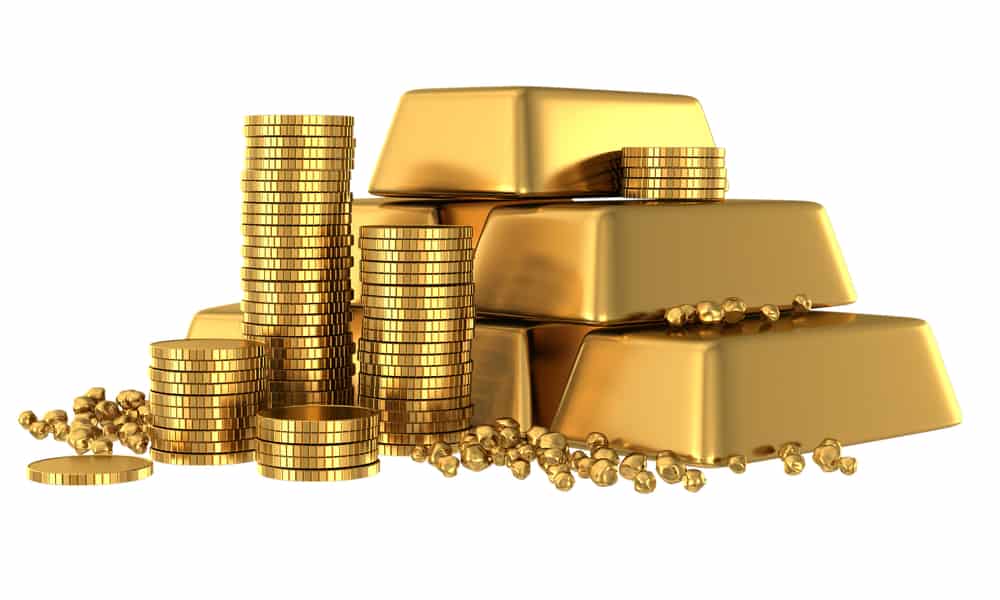The Rally in Gold Prices Indicate the Global Economy Is in Trouble

Author: Maria Andretti
Last Updated: 4 August 2020
With the current confusion in markets, it is easy to forget that early in the coronavirus pandemic, the price of gold was in freefall. It was strange, to say the least; the virus sparked a collapse in the global economy, but at the same time, the 2020 pandemic soon showed itself to be the driving force behind the greatest gold market rally that has ever been witnessed. On the opening day of the first full week in August, gold hit another record high, closing at $1,997.00, approximately 30 percent higher than the mid-March low.

COVID-19 is Fueling Demand for Gold
The myriad of economic forces that were unleashed by the pandemic has conspired to drive the demand for the safety from confusion and chaos that gold provides. There is a great deal of fear, uncertainty, and confusion. Will the government order a lockdown? Will politicians continue to push for additional stimulus packages? On top of that, the Central Bank continues to print money faster than ever before in an effort to finance the stimulus package. There is also the deep-dive in inflation-adjusted bond yields as well as the sudden decline of the U.S. dollar against all major currencies, not to forget the rising tensions between the U.S. and China.
All of these disruptive elements, when bundled, have sparked a concern that stagflation could take hold in parts of the developed world. Stagflation is defined as persistently high inflation in combination with ever-growing unemployment and stagnant demand in the economy.
Virus Continues to Rage in the U.S.
In the United States, the virus continues to rage, and economic recovery has stalled. Investor expectations for the annual rate of inflation over the next decade have moved higher after dropping in March. Inflation is currently running at 1.5 percent, a level that is still below pre-pandemic levels, and lower than the Feds target of 2 percent. However, inflation is almost a percentage point higher than the yield Treasury bonds pay, which is less than 0.6 percent.
There are several drivers behind gold’s rally. The main one, according to Edward Moya, Oanda Corp. senior market analyst, is real rates that are plummeting and not showing any signs of easing in the foreseeable future. Gold is of interest to investors who are concerned that stagflation will win the day, perhaps warranting continued accommodation from the Federal Reserve. Investors are looking for a safe haven, one that historically has not lost value.
Gold mania has trickled down to Main Street. EFT holdings backed by gold have gained for 18 straight weeks, thanks to retail investors. Last Friday saw gold post its seventh weekly gain. Analysts do not expect the gains to end any time soon.
Mark Mobius, Mobius Capital Partners co-founder, says when interest rates are at, or near, zero, gold becomes a very attractive medium to have because when you own gold, you do not have to worry yourself about interest or interest rates Mr. Mobius went on to say, “I would buy gold now and keep buying. “For months, analysts have been predicting a considerable upside for the precious metal. In April, the B of A Corp. raised its 18-month gold price target to $3,000 per ounce.
The head of the Bank of America commodities and derivatives research, Mr. Francisco Blanch, said the pandemic is giving gold a sustained boost, citing impacts such as the decline in real rates and a continued decline in productivity. Blanch went on to say that as the U.S. and China GDP converge, a geopolitical shift may unfold, adding further impetus for the bank’s prediction.
This is not the first time a central bank stimulus program has helped gold. From late 2008 to mid-2011, the Federal Reserve kept the cost of borrowing near zero and bought $2.3 trillion of debt, all to shore up growth. The move, at the time, drove gold prices to a new record in September of 2011.
Afshin Nabavi, trading head at MKS PAMP Group, a Swiss refiner and dealer, sees gold heading to $2,000.
BWCEvent aspires to share balanced and credible details on cryptocurrency, finance, trading, and stocks. Yet, we refrain from giving financial suggestions, urging users to engage in personal research and meticulous verification.


